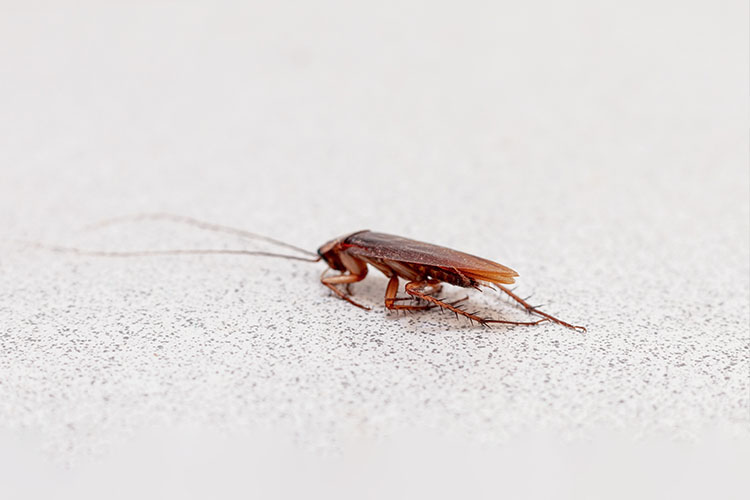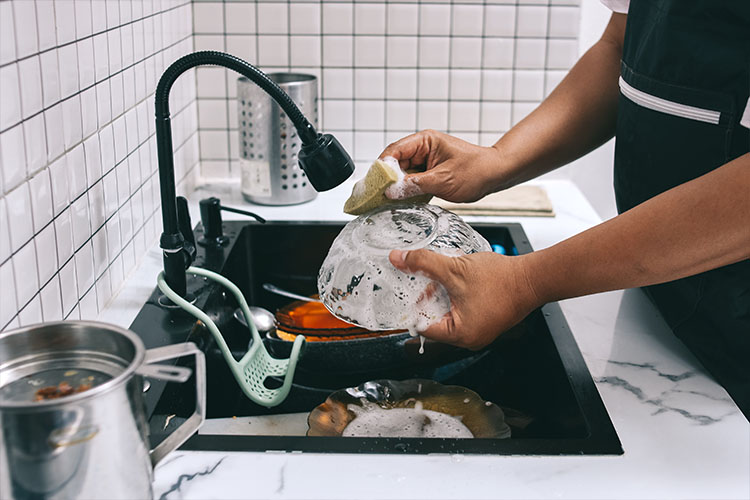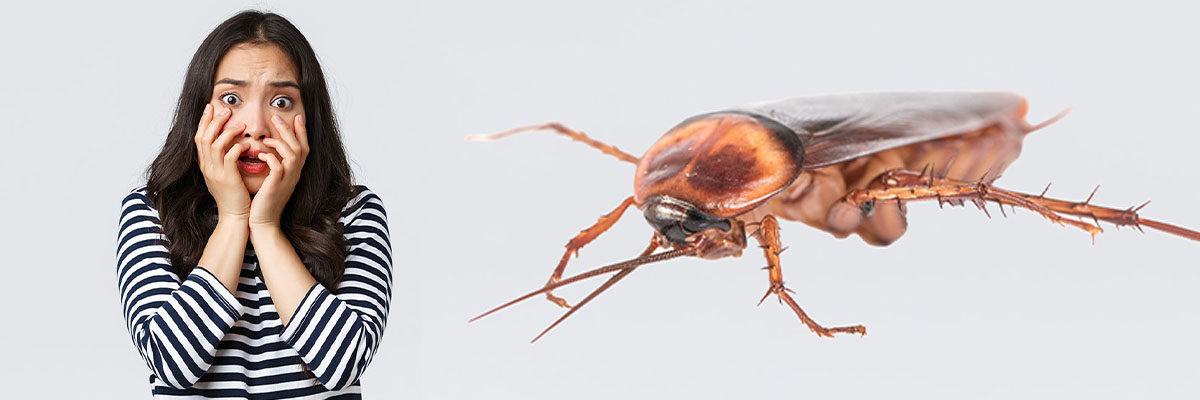Summary
Cockroach bites are rare and generally not dangerous. When they occur, the affected area often develops a raised welt larger than a mosquito bite, sometimes surrounded by smaller bumps. While these bites can be uncomfortable, they typically pose no serious risk.
However, cockroach saliva contains allergens that can trigger allergic reactions in sensitive individuals. Symptoms may include difficulty breathing, swelling of the airways, stomach pain, or vomiting. Such reactions require prompt medical attention.
For those without allergies, cockroach bites usually heal within a week with simple home remedies like applying antiseptic, using a cold compress to reduce swelling, and using insect bite creams for itching. Maintaining a clean environment and properly storing food are key to preventing cockroach bites.
Table of Contents
Symptoms of Cockroach Bite
When bitten by a cockroach, a person may experience the following symptoms:
- A large welt. The bite often results in a single, prominent welt that is larger than a mosquito bite.
- Smaller bumps around the welt. Small secondary bumps may form near the main welt, adding to the irritation.
- Intense itching. The affected area may become extremely itchy, leading to discomfort and a risk of infection if scratched excessively.
- Swelling or raised skin. The bite area may appear swollen or raised, further distinguishing it from minor skin irritations.
Identifying a cockroach bite can be challenging because it may resemble bites from mosquitoes or ants. However, if the person frequently spends time in areas infested with cockroaches, the likelihood of the welts being caused by a cockroach bite increases. Observing the environment and matching symptoms to potential pest activity can help confirm the cause.
Diagnostic Procedures for Cockroach Bite
Diagnosing a cockroach bite involves examining the bite marks, evaluating symptoms, and identifying the presence of cockroaches in the surrounding environment. While there is no specific test for cockroach bites, the following procedures are typically used to confirm the diagnosis:
- Physical examination of the bite. A healthcare provider will assess the bite area for typical characteristics, such as large, raised welts, surrounding smaller bumps, swelling, and intense itching. The appearance can help distinguish it from other insect bites.
- Symptom evaluation. The doctor may ask about accompanying symptoms such as redness, pain, or allergic reactions, including difficulty breathing, swelling of the airways, or nausea. These can indicate a more serious response to the bite.
- Review of recent activities. Understanding where the bite occurred and the conditions of the environment (e.g., exposure to cockroach-prone areas) helps determine if the bite is likely from a cockroach.
- Inspection of the living or sleeping area. Identifying cockroach activity in the home or workplace, such as sightings of live cockroaches, droppings, or eggs, can confirm their presence and link it to the bite.
- Ruling out other causes. Since cockroach bites can resemble mosquito bites, ant bites, or skin reactions, a thorough evaluation helps eliminate other potential causes, such as allergies or contact dermatitis.
- Allergy testing (if necessary). For individuals experiencing severe allergic reactions, an allergist may conduct tests to determine if cockroach allergens in saliva or feces are contributing to the symptoms.
Proper diagnosis ensures that the bite is treated effectively and any underlying infestation is addressed. If symptoms persist, worsen, or show signs of infection, seek medical attention promptly. Identifying the source of the bite is crucial to prevent further occurrences.
Complications of Untreated Cockroach Bite
While cockroach bites are generally harmless, leaving them untreated can lead to various complications, particularly for individuals with sensitive skin or underlying health conditions. Below are the potential complications associated with untreated cockroach bites:
- Secondary infections. Intense itching often leads to excessive scratching, which can break the skin and create an entry point for bacteria. This may result in infections like cellulitis or impetigo, characterized by redness, swelling, pain, and pus formation.
- Allergic reactions. Cockroach saliva contains allergens that can trigger reactions in sensitive individuals. Symptoms may include hives, swelling, difficulty breathing, or, in severe cases, anaphylaxis, which requires immediate medical attention.
- Scarring and hyperpigmentation. Persistent scratching or infected bites can leave lasting scars or darkened patches of skin, particularly for individuals prone to post-inflammatory hyperpigmentation.
- Worsened skin conditions. For people with pre-existing conditions such as eczema or psoriasis, untreated bites can exacerbate symptoms, leading to further irritation and discomfort.
- Delayed healing. Without proper care, cockroach bites may take longer to heal, prolonging discomfort and increasing the likelihood of complications such as infection or scarring.
- Psychological impact. The presence of cockroach infestations, combined with recurring bites, can lead to stress, anxiety, and disturbed sleep patterns, particularly in individuals with a fear of insects (entomophobia).
Although cockroach bites are not inherently dangerous, neglecting them can result in unnecessary discomfort and health risks. Proper care of the bite, including cleaning, applying antiseptic, and avoiding scratching, is essential. Addressing the underlying infestation is equally important to prevent further complications and bites.
Causes of Cockroach Bite
Cockroach bites are extremely rare and typically occur only under specific circumstances. Cockroaches may bite when food sources are scarce or if they feel threatened or disturbed. These instances are uncommon, as cockroaches primarily feed on organic debris rather than live prey.
A person may be bitten if they have leftover food residue on their mouth, face, or hands, as this can attract cockroaches. Additionally, the presence of dead skin particles or sweat buildup on the body may also draw their attention, as cockroaches can feed on such organic materials.

Cockroaches tend to bite exposed areas of the body, such as the face, mouth, arms, hands, and fingers. These uncovered parts are more accessible to the insects, particularly during sleep when the individual is less likely to notice their presence. Regular hygiene and maintaining clean surroundings can help reduce the likelihood of cockroach bites.
Prevention of Cockroach Bite

To prevent cockroach bites, it is crucial to maintain a clean and organized living or working environment. Cockroaches are attracted to food, moisture, and clutter, so taking the following steps can help ensure they do not inhabit your space:
- Keep all areas clean, especially the kitchen. Regularly clean sinks, dish racks, dining tables, and floors to remove food particles and grease that may attract cockroaches.
- Store food in sealed containers. Use containers with tight lids to store food, especially items like sugary, greasy, cheesy, or fishy foods, as their strong smells are highly attractive to cockroaches.
- Use garbage bins with sealed lids. Properly seal trash cans to contain the smell of decaying food, which can also lure cockroaches. Dispose of trash regularly to prevent infestations.
- Eliminate moisture. Cockroaches require water to survive. Ensure that all areas, including the kitchen, bathroom, and laundry spaces, are dry. Check for leaking pipes and fix them promptly to cut off water sources for cockroaches.
- Avoid storing clutter indoors. Minimize the storage of old papers, dirty clothes, or unused items that can harbor mold or provide hiding spaces for cockroaches. Declutter rooms and regularly dispose of unnecessary items to maintain cleanliness.
By implementing these preventive measures, you can reduce the likelihood of cockroach infestations and avoid the discomfort and potential health risks associated with cockroach bites.
Risk Factors for Cockroach Bite

Anyone can be bitten by a cockroach, but certain groups of people are at a higher risk due to specific behaviors or living conditions. Here are the individuals who are more prone to cockroach bites:
- Children. Children are often bitten because they tend to eat snacks before sleeping and may not wash their hands or clean themselves properly after eating or playing. Food residue on their skin and clothing can attract cockroaches.
- Residents of crowded or high-density areas. People living in overcrowded areas, such as squatter settlements, face a higher risk of cockroach bites. These areas often lack proper waste disposal systems, clean water access, and adequate sanitation, creating ideal conditions for cockroach infestations.
- Urban dwellers. Even in clean cities, residents are not entirely safe from cockroach bites. Homes or offices near sewers, drains, or waterways are at risk, especially during the rainy season when flooding drives cockroaches out of their hiding places and into buildings.
- People with poor housekeeping habits. Individuals who do not maintain cleanliness in their homes are more likely to encounter cockroach infestations. Unmanaged trash piles, clutter, and dirty surroundings provide food sources and nesting areas for cockroaches.
Being aware of these risk factors can help individuals take targeted measures to prevent cockroach bites. Maintaining cleanliness, proper waste management, and addressing environmental vulnerabilities are key to reducing the presence of cockroaches and their potential bites.
Cockroach Bite FAQs
Cockroach bites are uncommon but can occur under specific circumstances, leading to discomfort and potential allergic reactions. To help you better understand cockroach bites, here are some frequently asked questions with concise and informative answers.
- Do cockroaches bite humans?
Yes, cockroaches can bite humans, although it is rare. They typically bite when food is scarce or if they are disturbed. - What do cockroach bites look like?
Cockroach bites appear as large, raised welts, often larger than mosquito bites. They may be surrounded by smaller bumps and are usually itchy or swollen. - Where on the body do cockroach bites occur?
Bites typically occur on exposed areas of the body such as the face, mouth, hands, arms, and fingers, especially while sleeping. - Are cockroach bites dangerous?
Most cockroach bites are not dangerous, but they can cause intense itching and, in some cases, allergic reactions. Severe reactions may require medical attention. - How can I treat a cockroach bite?
Clean the bite area with soap and water, apply an antiseptic, and use a cold compress to reduce swelling. Over-the-counter antihistamines or insect bite creams can alleviate itching. - Can cockroaches spread diseases through their bites?
While cockroaches are known carriers of bacteria, they are not known to transmit diseases through their bites. However, their saliva may trigger allergic reactions. - Why do cockroaches bite?
Cockroaches bite when they are hungry and food sources are limited. They may also bite if they are disturbed or attracted to food residue or dead skin on a person’s body. - Who is most at risk for cockroach bites?
Children, people living in crowded or unsanitary areas, and individuals with poor housekeeping habits are more likely to be bitten by cockroaches. - How long does it take for a cockroach bite to heal?
Cockroach bites typically heal within a week if treated properly. In cases of allergic reactions, recovery may take longer and may require medical intervention. - How can I prevent cockroach bites?
Maintain cleanliness, store food in sealed containers, fix leaks, declutter your home, and ensure proper waste disposal to prevent cockroach infestations and reduce the likelihood of bites.


